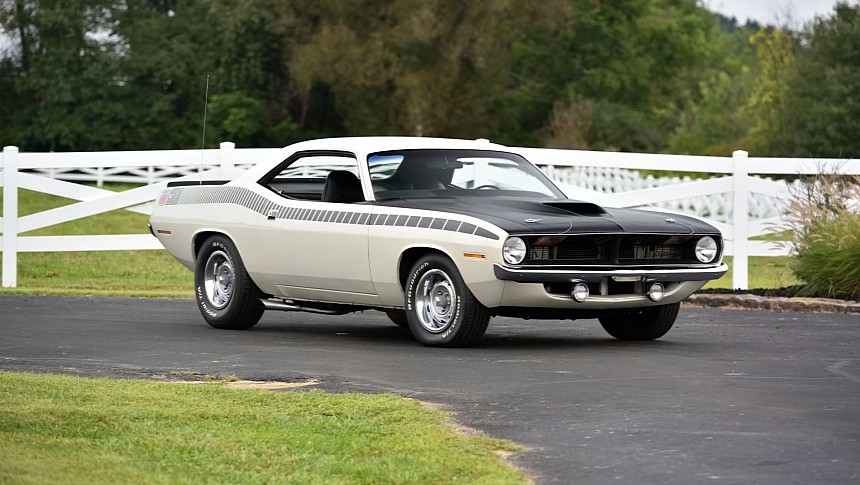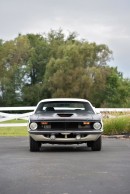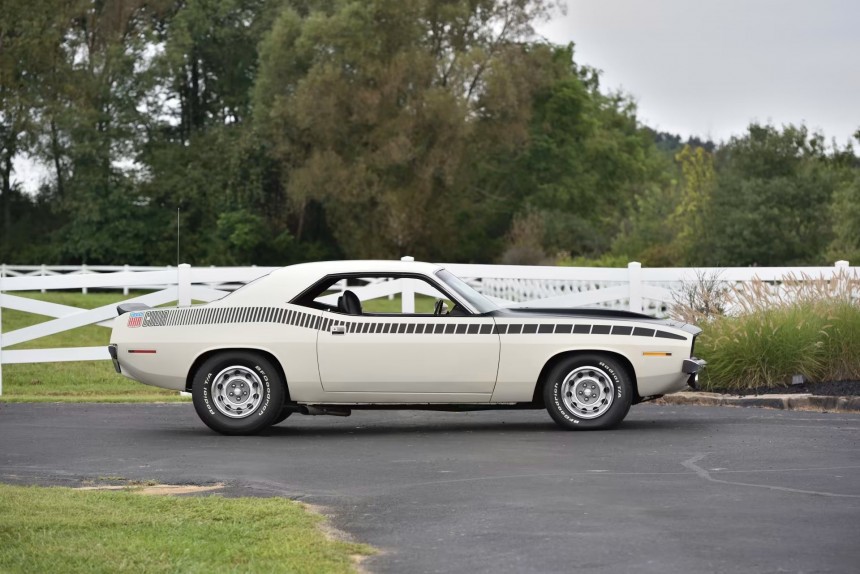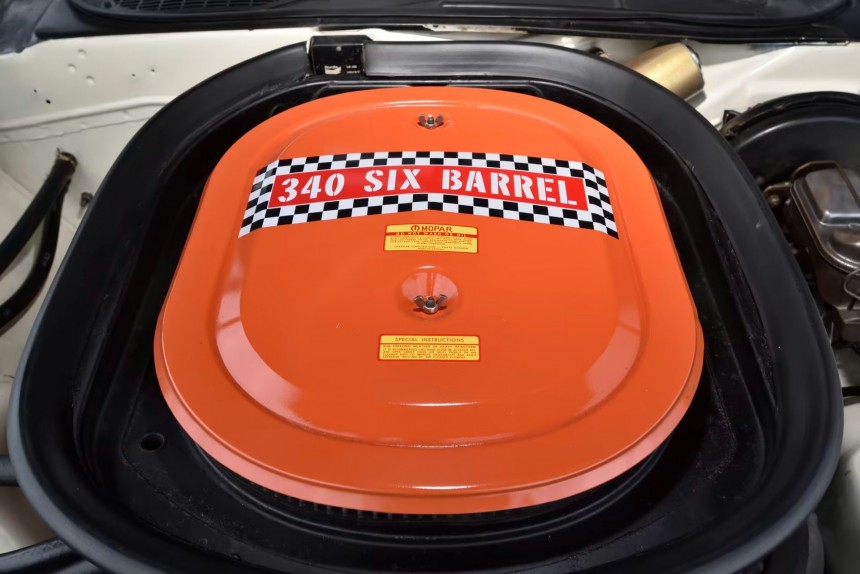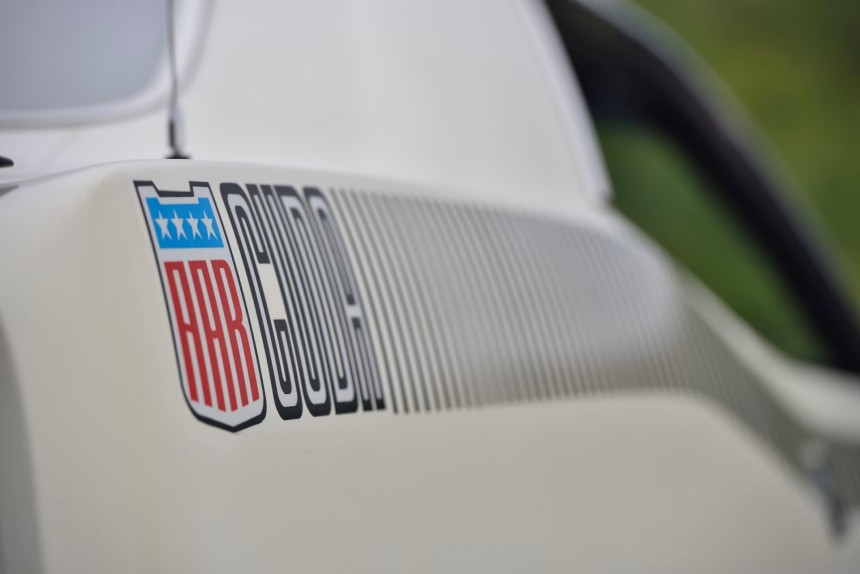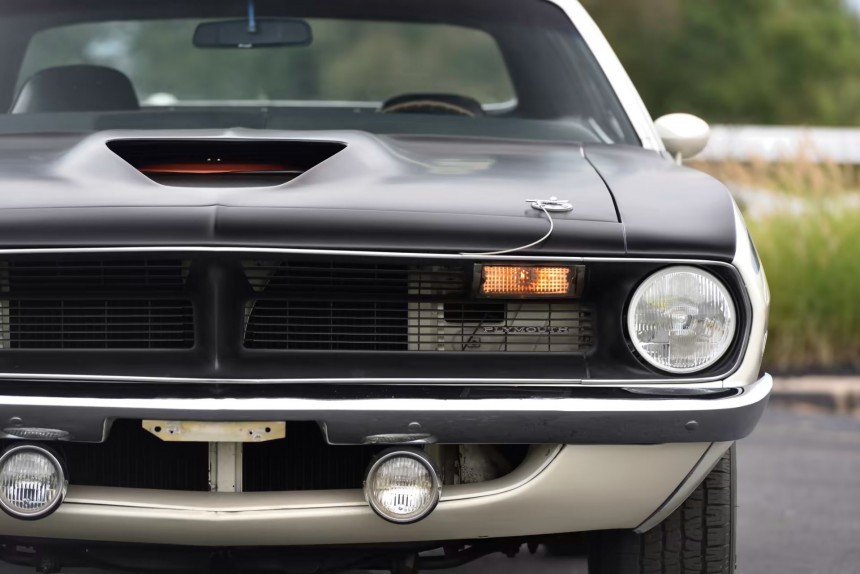Again and again, the keystone year 1970 rolls its eventful nostalgia toward the vast legions of gearheads who have taken the muscle car pledge of allegiance and prefer mechanical wristwatches over today’s wristband computers. This time, a lucky Mopar thoroughbred from a misfortunate racing effort burbled its way into our attention, one of a limited homologation-mandated production run of 2,724 units.
The number in the opening paragraph is a no-brainer for Moparists of all ages and displacement preferences – the figure stands for how many examples left the Hamtramck assembly plant between March 11 and April 17, 1970. There’s also a three-letter code involved, pointing to the cars’ race lineage: AAR. Short for ‘All-American Racers,’ the cars were Plymouth’s new-for-the-year E-body Barracudas, and they became an instant classic and a treasure trove for collectors.
The cars came solely to allow the engine to run in the Trans American Sedan Championship in 1970. Like Ford’s Mustang Boss 302 and 429 and Mopar’s own Street HEMI, the V8 that powered the AAR special Plymouth Barracuda had to have a road-legal, mass-produced counterpart.
At the time, regulations stipulated that a minimum of 2,500 units (or 1/250th of the previous year's production if it was above the required threshold) had to be assembled for the engine to get the green light for racing. Mother Mopar laid all her hatch in five weeks so that Dan Gurney could challenge Mark Donohue’s domination.
However, racing in Trans Am proved a tough nut to crack for Chrysler, who didn’t get too many podium celebrations from 1966 until 1972. The little brother of Detroit’s Big Three never wore the crown of laurels at the end of a season during Trans Am’s first years ('66-'72). That’s one reason why the manufacturer signed Dan Gurney for 1970, hoping to sit at the table previously shared by Ford and Chevrolet.
With two championships on either side, Ford and GM fought hard in 1970, with the Blue Oval clinching its third title. Until 1972, drivers didn’t get separate Trans Am rankings of their own, but if that had been the case, only a single point would have separated the leaderboard’s top position from the runner-up.
With such fierce competition, Chrysler didn’t stand a fighting chance, and the AAR ‘Cuda only claimed fifth, right below its Siamese cousin, the 1970 Dodge Challenger T/A. Due to a steep dive deep into the red in the racing program and the cars’ production, the AAR and T/ A Mopars were scrapped at the end of the season.
Chrysler couldn’t generate the showroom traffic critical mass required to break even on the cost of research and engineering, and the less-than-encouraging debut in Trans Am of the E-bodied brothers didn’t make Mopar brass fall on their backs with enthusiasm. It was as simple as it was swift – the All-American Racers Plymouth Barracuda and the Dodge Challenger T/A remained one-year icons of the greatest moment in muscle car history.
It's not at all hard to imagine what would have become of the models if Chrysler had kept them in production, considering the fate of the last ‘Cuda and the first Challenger. But imagination serves very little when reality is so much better. Although built in limited numbers, the AAR ‘Cuda has kept its appeal through the years.
Unlike the Challenger T/A, the AAR Plymouth wasn’t as visually exuberant as to sport a massive hood scoop and deck lid wing. The ‘Cuda had a more streamlined profile with a functional air inlet on the fiberglass hood and a duck-tail spoiler that improved stability without being a drag.
A full-length strobe stripe ran the entire sides of the ‘Cuda, from the headlights to the back of the rear quarters, where it stopped at the engine displacement decals and AAR red-white-and-blue shield. The car’s unique stance is most admirable from the side, with the dual exhaust sticking out under the rocker panels just in front of the rear tires.
The Plymouth AAR Cuda was the first Mopar and one of the first muscle cars to use offset tire sizes. 15 x7 Goodyear Polyglass GTs, E-60 in the front and G-60 in the rear gave the already-mean ‘Cuda its raked stance. The stopping power came standard with front disc brakes and rear drums, the radio antenna was mounted on the rear, and optional, dealer-installed chin spoilers were subtle hints that this was no ordinary car.
Extraordinary indeed, thanks to its 340-cube V8 (5.6-liter) with a trio of dual-barrel carburetors that torqued the rear wheels via a standard manual-four box. The TorqueFlite self-shifting three-speed auto was an option – one of the few selectable items available for the homologation special ‘Cuda.
The engine had a larger displacement than what All-American Racers factory-backed team used in the three ‘Cudas it raced in 1970. Dan Gurney’s boys de-stroked the V8 to make it a 305-CID (5.0-liter), 440-hp machine gun. The street engine was officially rated at 290 hp (293 PS), just 15 more than the regular single four-barrel carbureted variant of the 340. Crank spin sat at 350 lb-ft (475 Nm) and gave the particular ‘Cuda a 0-60 time of 5.8 seconds and a standing quarter of 14.3 clicks at 99.5 mph (160 kph).
Dan Gurney ended his career in the final race of the Trans Am season at the wheel of an AAR ‘Cuda, imbuing the nameplate with an aura of nostalgia collectors fully appreciate, especially when one happens to come up for public sale. One of those one-year specials will go under the hammer at Kissimmee next January, fresh out of a 36-year-long ownership (the car’s second).
Finished in Alpine White (refreshed in 2000), the star of the Kissimmee auction AAR ‘Cuda has the original engine, transmission, and 3:55 rear end. Despite its 66,522 title-exempt miles (107,000 kilometers), the body is intact (the sheet metal still bears the Hamtramck stampings). A Chrysler Registry report claims that only four were assembled with the same options as this splendid black-and-white example. With the high-water bid mark set last January at $308,000 by another mint AAR, it wouldn’t be a shocker to see this one challenge that number.
The cars came solely to allow the engine to run in the Trans American Sedan Championship in 1970. Like Ford’s Mustang Boss 302 and 429 and Mopar’s own Street HEMI, the V8 that powered the AAR special Plymouth Barracuda had to have a road-legal, mass-produced counterpart.
At the time, regulations stipulated that a minimum of 2,500 units (or 1/250th of the previous year's production if it was above the required threshold) had to be assembled for the engine to get the green light for racing. Mother Mopar laid all her hatch in five weeks so that Dan Gurney could challenge Mark Donohue’s domination.
With two championships on either side, Ford and GM fought hard in 1970, with the Blue Oval clinching its third title. Until 1972, drivers didn’t get separate Trans Am rankings of their own, but if that had been the case, only a single point would have separated the leaderboard’s top position from the runner-up.
With such fierce competition, Chrysler didn’t stand a fighting chance, and the AAR ‘Cuda only claimed fifth, right below its Siamese cousin, the 1970 Dodge Challenger T/A. Due to a steep dive deep into the red in the racing program and the cars’ production, the AAR and T/ A Mopars were scrapped at the end of the season.
It's not at all hard to imagine what would have become of the models if Chrysler had kept them in production, considering the fate of the last ‘Cuda and the first Challenger. But imagination serves very little when reality is so much better. Although built in limited numbers, the AAR ‘Cuda has kept its appeal through the years.
Unlike the Challenger T/A, the AAR Plymouth wasn’t as visually exuberant as to sport a massive hood scoop and deck lid wing. The ‘Cuda had a more streamlined profile with a functional air inlet on the fiberglass hood and a duck-tail spoiler that improved stability without being a drag.
The Plymouth AAR Cuda was the first Mopar and one of the first muscle cars to use offset tire sizes. 15 x7 Goodyear Polyglass GTs, E-60 in the front and G-60 in the rear gave the already-mean ‘Cuda its raked stance. The stopping power came standard with front disc brakes and rear drums, the radio antenna was mounted on the rear, and optional, dealer-installed chin spoilers were subtle hints that this was no ordinary car.
Extraordinary indeed, thanks to its 340-cube V8 (5.6-liter) with a trio of dual-barrel carburetors that torqued the rear wheels via a standard manual-four box. The TorqueFlite self-shifting three-speed auto was an option – one of the few selectable items available for the homologation special ‘Cuda.
Dan Gurney ended his career in the final race of the Trans Am season at the wheel of an AAR ‘Cuda, imbuing the nameplate with an aura of nostalgia collectors fully appreciate, especially when one happens to come up for public sale. One of those one-year specials will go under the hammer at Kissimmee next January, fresh out of a 36-year-long ownership (the car’s second).
Finished in Alpine White (refreshed in 2000), the star of the Kissimmee auction AAR ‘Cuda has the original engine, transmission, and 3:55 rear end. Despite its 66,522 title-exempt miles (107,000 kilometers), the body is intact (the sheet metal still bears the Hamtramck stampings). A Chrysler Registry report claims that only four were assembled with the same options as this splendid black-and-white example. With the high-water bid mark set last January at $308,000 by another mint AAR, it wouldn’t be a shocker to see this one challenge that number.
